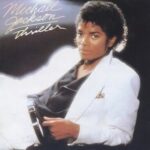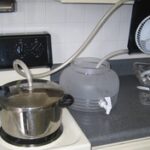I am one of the many people out there desperate to break into the music industry under my own steam, so to speak. The music industry is filled with tons of people who can make or break your career (or even both simultaneously). Singers who do not write their own material often have it the worst. They are at the mercy of musicians and songwriters who may or may not share their artistic vision. Those ensconced in recording contracts are most often even more stifled in their creativity-especially if the record label has a definitive vision appointed for said artist. This is why I decided that if I should continue on in the wonderful world of music, I should at the very least, learn how to produce my own songs. This may sound like an easy approach to creative liberation. Quite frankly it is, if not for one thing: I am not an “experienced musician,” and I cannot read music. Again, this may seem like a small detail, considering that there is literally a ton of software available wherein people can produce music without even picking up an instrument. But for more authentic sound, and a “hands-on” approach to beautiful music, it’s only natural that an aspiring singer would want to experience music-making with real instruments. Assuming that you have a minimal amount of familiarity with musical instruments, here are a few basic steps with regard to music production.
- EQUIPMENT– The type of equipment you obtain will largely depend on several factors, such as space, cost, and depth of your production goals. The best thing to start with is a piece of mixing/ recording equipment. It is preferable to keep things simple at first. Check with online vendors like Musicians Friend for inexpensive, yet top of the line multi-track recording workstations. You can find an eight-track digital recording package (including microphones) for as little as $300. You do not have to purchase something extensive. But in order to get the feel for producing, you’ll need something to “produce” with. Other mentionables include the instruments themselves. If you’re not a guitarist, bassist or drummer, the best thing to procure would be an all purpose keyboard.
- SONG PLANNING – Once you’re all set with equipment and/or instruments, it’s time to figure out a plan for the song you’d like to record. Will the song be up tempo, or slow and melodic? The most important part of song production, is figuring out what you want to say with the music. If you’re completely at a loss for ideas, think about the kind of songs you like. Listen to multiple CDs and begin attempting to pick apart the instruments you hear. Once you start hearing songs in “pieces,” you’ll get a better idea for how they are arranged. This is going to seem difficult at first. “Non-musicians” tend to hear music cumulatively, instead of in parts. So, it may take a while for you to understand how songs are constructed.
- TEMPO – This is perhaps the most important part of song production. The tempo for your song is generally what’s going to set the mood. Assuming that you’ve obtained at the very least-a keyboard, you have a few options for building your tempo. Almost all multi-purpose keyboards, like the Yamaha DJX, have built-in rhythms which can be altered a number of ways. Some keyboards will allow you to sample the entire loop. Others are sophisticated enough that you can remove certain parts (like snare drum, kick drum, etc.) and build a rhythm section AROUND what’s already there. Either way, this is a smart way to get your feet wet with song building. Figure out a tempo that suits you, and record several minutes of it. I recommend recording at least 6-7 minutes so that you have much room to play with. Remember, it’s better to have “too much” material to edit down, rather than too little material which you’ll have to add to. Play around with breaks and rhythm intros. This will give your song a more authentic flavor.
- BASS – Not all songs have a bass line. But that simple, yet rumbling melody you hear in most songs is in fact the glue that holds the song together. It’s true that adding bass to a song gives it a more complete sound. But the important thing to note is that most bass lines coincide very closely with the rhythm section. Most musicians and producers will tell you that the bass and drum sections of a band are critical to the direction a song takes. Again, listen to some of your favorite CDs and try to pick out the bass lines. This will be the part of the song that sounds redundant, yet melodic. It’s the deeper part of the song that sounds as if it’s “riding” the rhythm section.
- MELODY — This is the “Stuff” that songs are made of. Your first excursion into the world of song producing may seem a bit daunting. If you’re a singer, you’ll understand the meaning of “bars” and how they relate to verses, choruses, and musical breaks. Typically, songs run on the “4-bar” (or 4-measure count). Use this measure in order to count out the length of your verses. For instance, after you’ve established a tempo, it will be easier for you to figure out where the music should begin and end.Also, when drafting a song, the best thing to do is to try to “hear” a melody in your head. What tune comes to mind? Never mind how silly it seems, record it. You’d be surprised at how silly your favorite songs would sound, if you stripped down all the effects, background voices, and other instrumentation. On your keyboard (or other instrument of your choice), try to pick out notes by ear. This is the easiest way to find melodies which are harmonious. If you only find three repetitive notes, then play them. You can always add to them and make them sound fuller later on.
_____________________
These may sound like some pretty elementary instructions for creating great masterpieces. The truth is that most of the work is going to be done in your head. The equipment you use and the instruments you play are really only as good as the ideas you have. The key to learning how to produce good music is an understanding of what you’re trying to convey. Take simple steps in building your songs. Remember that the more tracks you have to record with (8-track machine vs. a 24-track machine), the better off you’ll be in piecing together the building blocks of a song.
Playing by ear is a very time-consuming process. But once you get started, and understand how songs fit together, you’ll find that songwriting is much easier than you thought it was. Singers will have an easier time of self-producing, especially if they have had many years of experience around seasoned musicians. Song construction can appear very intimidating. But it’s important to bear in mind that some of the best songs in the world are some of the simplest ones that were ever written.




